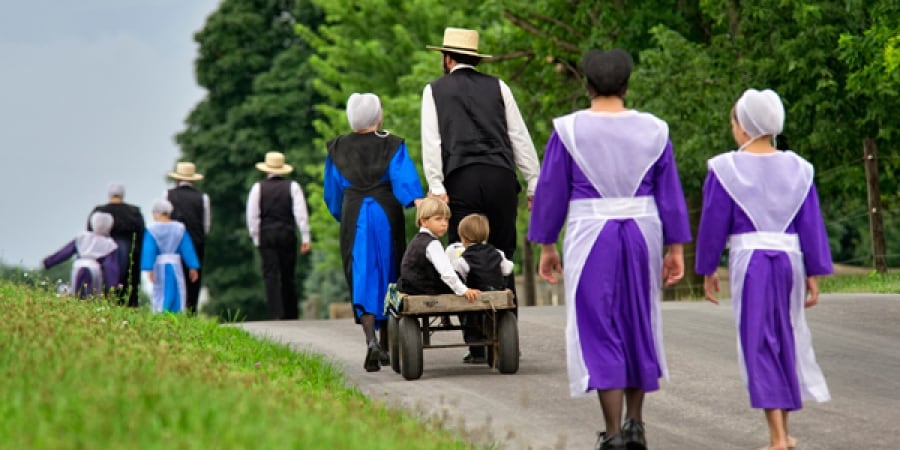Keeping together as a family and learning the spiritual model is encouraged in Amish culture. A title that reflects the importance of family to the Amish is Family Life, the name of perhaps the most widely read Amish publication. Amish families are not perfect, but there are still some values that we might consider old-fashioned that remain highly influential in their lives.
It is important to remember that divorce is not permitted by the Amish, and they can excommunicate you for it. The Amish do have dysfunctional families, but absentee fathers, single-parent households, or split households aren’t as common as they have been in the larger society.
The Amish have large families. Family sizes are typically 6 to 8 (with some communities averaging even 8 or 9 children per family). They believe in the Book of Genesis directive to “be fruitful and multiply”. There are many cousins, aunts, uncles, and siblings among Amish individuals. Children are regarded as a great blessing.
It is important for the Amish to spend time with their families. Children can learn a work ethic as well as spiritual lessons from parents who do things together. In the Amish tradition, farming has been viewed as the ideal occupation. The reason for this is partly because it allows fathers to remain at home with their kids and wives.
Farming has declined substantially in some Amish settlements, but many have instead opened up home businesses that can enhance family time and instill work ethics in the next generation.
The process of starting a family
Unlike a lot of children, Amish children are typically surrounded by family, so they always feel like they belong [and yes, that duckling picture was really just for my own enjoyment].
A typical Amish marriage occurs in the early- to mid-20s. Families typically begin adding members soon afterward. It is likely that some Amish families practice birth control in some form, so that means large families.

The majority of children learn a strong work ethic from an early age, with many being given responsibilities. An Amish family life is typically enormous, with many sisters and brothers, aunts, uncles, and grandparents nearby, so children rarely want to play with other children or have companionship.
The role of parents
To outsiders, family and parental roles seem very traditional – males working outdoors, women and girls caring for children at home
Families in the Amish community are structured differently. Amish believe that Scripture supports the position of the male as household head. The Amish man is also usually the household’s primary breadwinner (although Amish women can play a significant role in household finances in some cases). In some cases, he also takes on other leadership responsibilities, such as serving on a parochial school board or other committees if he is called to such a role.
The House
Amish homes focus on family while having large spaces for church and community gatherings. (Some Amish homes are fancier, while others are plainer) The Amish home is the center of family life and reflects both the church standards of the community and the emphasis on family. The Amish homes usually have multiple rooms, a large living room, kitchen, and basement, which can be used for gatherings like Sunday services held by most Amish families at least once each year.
